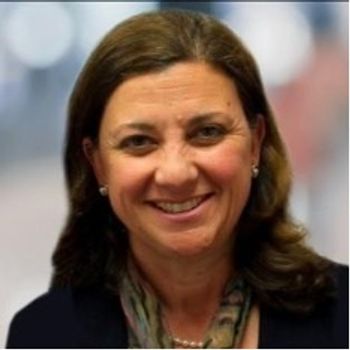
CMS’s proposed retooling of ACOs getting mixed reviews
The proposed new rule would make it harder for accountable care organizations to realize the financial benefits of participating in the Medicare Shared Savings Program without also taking on more financial risk.
The Medicare Shared Savings Program (MSSP) was conceived under the Affordable Care Act as a way to reduce Medicare spending without diminishing the quality of patient care. But the program hasn’t produced the expected savings since its launch in 2012, so the Trump Administration is proposing a dramatic makeover.
CMS Administrator Seema Verma recently proposed a new rule that would make it harder for accountable care organizations (ACOs)-the vehicles for participating in the MSSP-to realize the financial benefits of participating in the program without also taking on more financial risk. “We are proposing significant changes to increase quality for patients and drive toward program-wide savings,” Verma wrote in a Health Affairs blog post accompanying the announcement.
Reaction to Verma’s announcement so far has been mixed. The National Association of ACOs is strongly opposed, calling it “a significant setback for Medicare payment reform.” But the CEO of a private company active in the ACO field sees some benefits to the rule. If CMS adheres to its typical timetable for rule adoption, it would likely take effect late this year or in early 2019.
ACOs consist of hospitals, medical practices and/or other providers that band together to care for an assigned group of Medicare beneficiaries, with the goal of providing the care for less than what the government projects it would cost under Medicare’s fee-for-service program. ACOs that achieve the goal within Medicare’s quality standards share some of the savings with the government. Those whose costs exceed government benchmarks face financial penalties.
An ACO’s financial risk and reward varies according to which of the program’s three “tracks” it chooses. Track 1 ACOs receive a smaller share of any savings, but are not penalized for higher-than-projected costs. In contrast, tracks 2 and 3 ACOs keep a greater share of any savings they generate, but also face penalties if their costs exceed the government’s benchmarks.
The problem, according to CMS, is that more than 80 percent of the 561 current ACOs are in track 1, and thus are generating little, if any, savings. Moreover, they are allowed to remain in track 1 for up to six years. The agency wants to address this by consolidating the three existing tracks into two, known as BASIC and ENHANCED. ACOs on the BASIC track would start by sharing in savings with no financial risk, with the amount of shared savings they could keep capped at 25 percent, compared with the 50 percent share track 1 ACOs are now eligible for. After two years they would automatically start moving to progressively greater levels of reward and risk, culminating in levels that would qualify as an advanced payment model (APM) under MACRA.
The ENHANCED track would be similar to the current Track 3 in terms of rewards and penalties, but offer some additional tools and flexibility to help participating ACOs reduce care costs.
In a media briefing, Verma said ACOs shouldn’t be allowed to earn additional revenue without being at risk for any losses. “After six years of experience, the time has come to put real accountability in accountable care organizations,” she said, adding that the proposed changes would save Medicare an estimated $2.2 billion over the next 10 years.
CMS is proposing a July 1, 2019 start date for implementing the changes. ACOs whose contracts are due to expire at the end of 2018 would get a six-month extension.
The National Association of ACOs (NAACOS) reacted to the proposed rule with alarm, citing a survey it conducted earlier this year in which executive at many ACOs said they would leave the program rather than take on financial risk.
“It’s naïve to think that ACOs that aren’t ready can be forced to take on risk, given that the program is voluntary, NAACOS president and CEO Clif Gaus said in a written statement. “The more likely outcome will be that many ACOs quit the program, divest their care coordination resources and return to payment models that emphasize volume over value.”
But Farzad Mostashari, MD, co-founder and CEO of Aledade, a company that helps organize and manage ACOs, sees some benefits to the changes CMS is proposing, particularly in consolidating the participation tracks.
“The idea is to create a sequence where you start off basic and then they move you up,” he says. “You will be marched up this escalator until you reach the APM level with greater downside risk. I think letting ACOs sit for too long with no downside risk is not a good idea.”
Mostashari notes that the proposed rule includes data from 2016 comparing the performances of ACOs led by physicians to those led by hospitals, with physician-led ACOs saving about $500 million, and those led by hospitals saving virtually nothing.
“The conventional wisdom is that ACOs aren’t performing as well as expected,” he says. “It would be more correct to say that hospital-led ACOs aren’t performing well, but physician ACOs are doing quite well.”
CMS is accepting public comment on the proposed rule through October 16.
Newsletter
Stay informed and empowered with Medical Economics enewsletter, delivering expert insights, financial strategies, practice management tips and technology trends — tailored for today’s physicians.








